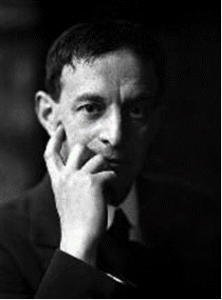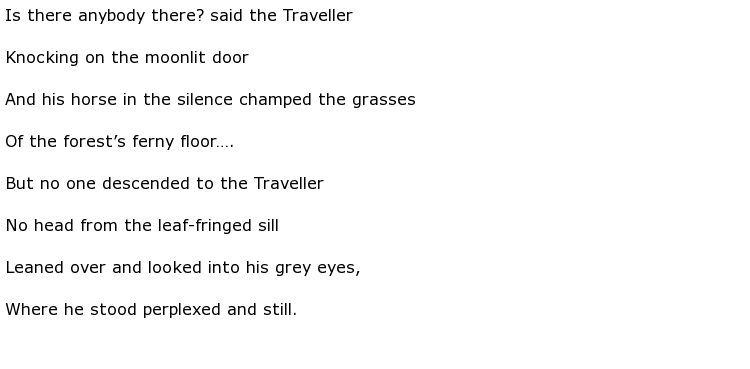 Walter de la Mare is one of England’s best known writers, producing great works that were often atmospheric, slightly scary and with a touch of mystery. Born in south east London in 1873 into fairly privileged circumstances he was accorded, on his death in 1956, the honour of having his ashes buried in the crypt of St Pauls Cathedral. He had, in fact, been a choirboy while attending the St Paul’s Cathedral Choir School and left school at age 16 to work for the Anglo-American (Standard) Oil Company in London as a clerk in the department of statistics. Curiously, when he left this employment at only 35 years of age, he was awarded a Government pension and was able to retire to concentrate fully on his writing
Walter de la Mare is one of England’s best known writers, producing great works that were often atmospheric, slightly scary and with a touch of mystery. Born in south east London in 1873 into fairly privileged circumstances he was accorded, on his death in 1956, the honour of having his ashes buried in the crypt of St Pauls Cathedral. He had, in fact, been a choirboy while attending the St Paul’s Cathedral Choir School and left school at age 16 to work for the Anglo-American (Standard) Oil Company in London as a clerk in the department of statistics. Curiously, when he left this employment at only 35 years of age, he was awarded a Government pension and was able to retire to concentrate fully on his writing
It was at the age of 22 that his writing career really began when he published a story in the Sketch newspaper called Kismet but he used the pseudonym Walter Ramal at this time. He was probably given much encouragement by his mother, Lady Sophia, to follow a literary career. She was a relative of the famous poet Robert Browning. De la Mare’s family life was happily spent in Taplow in Buckinghamshire where he and his wife had four children. His son Richard followed him into the business although on the publishing side, as opposed to writing. Richard published many of his father’s books as the Chairman of the well-known publishing house Faber and Faber.
It was a fairly modest beginning to a great writing career though. Writing for different periodicals gave him the confidence to publish such collections of poetry as Songs Of Childhood, again under his pen name Walter Ramal. As the 20th century neared the end of its first decade Walter changed direction, concentrating on the eerie and the mysterious. The Return came out in 1910 and was about the spiritual possession of a man by an 18th century pirate and he followed this up with a successful collection of poems called The Listeners, published in 1912. The title poem has been widely studied and anthologised and features a lone Traveller haunted by a supernatural presence. Here are a few lines from this piece:

Walter de la Mare had a strange writing style that was often compared to that of Blake for its dreamlike characteristics. Although some of his stories have appeared in horror collections they could not really be described as true horror stories but many did contain a hint of hidden malevolence. He wrote of many things that were commonplace and he explored death, dreams and the wonder of childhood.
His career attracted many honours and awards, the most notable being the Companion of Honour in 1948 and the Order of Merit in 1953. He received honorary degrees from both Oxford and Cambridge and he was driven to write prose and poetry right up to the time of his death in 1956. He had already suffered a coronary thrombosis nine years earlier but the second one killed him at the age of 84.

